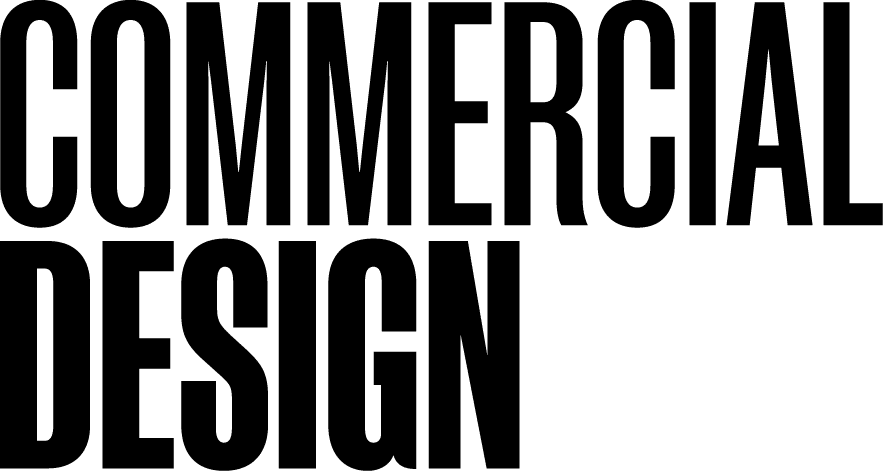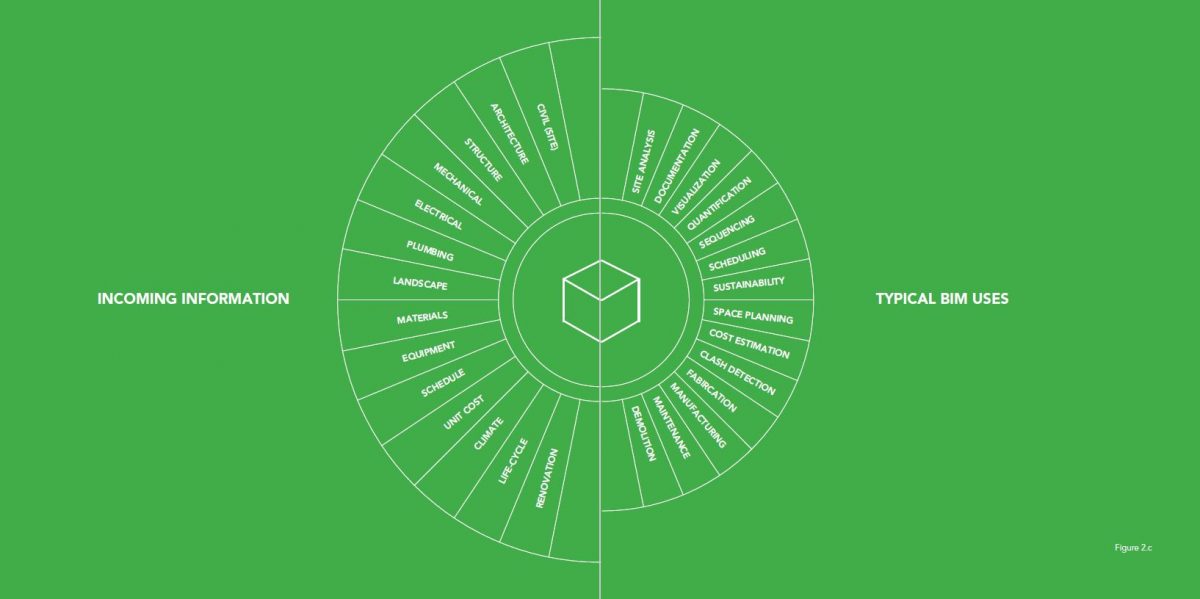BIM Model being the digital representation of a building with both physical and functional characteristics of real world building elements, there is something useful for everybody involved in the project. The use of BIM goes beyond design and construction covering the life-cycle of a building by virtue of rich visuals or accurate project information.
- Rich visual aspect in all stages
Modeling is the availability of 3Dimensional models enabling everybody to visualize the project as it would be built on-site. Traditionally visualization was restricted only for design and marketing purposes but BIM provides the team with an added value of visualizing the information incorporated into the models in various stages. - High accuracy of information
Well coordinated and maintained project information is the most important asset to succeed in any construction project. By incorporating all traditional 2Dimensional drawings and several reference data sets into an unified 3Dimensional BIM Model ensures that the project information is accurate and coordinated at all times.
- Accessible to all project stakeholder
BIM work-flows and concepts at its core are developed with the idea of enabling open communication among the project stake holders. Transparent and honest communication enables the team to identify issues and risks early in the process and potentially saving major pitfalls at a later stage.
It is important for everybody involved in a project be it early stages or later, to understand the purpose and life-cycle of the models and their affect on the project.
1. PLANNING
Using BIM at the planning stage brings all critical master planning parameters into a unified 3D model environment.
Having all the planning information organized in 3D gives rise to a good start for the project making the team well informed about the project helping them to initiate the design process with confidence.
The advantages of initiating the project using BIM is that the information incorporated into the models can be carried through the entire project life-cycle. Planning is a critical stage as this is where the vision and business goals are identified and next steps are clearly defined.
BIM can be used at various levels during the planning phase.
- Programming
Spatial planning & Programming a project in 3D will enable the team to accurately define, analyze and document important parameters like Gross Floor Area and Spatial categorization and relations. - Master Planning
Analyzing and understanding the site location and master planning aspects of a project will ensure that the design direction meets the local code requirements. This is better achieved by having the site model developed with surrounding existing infrastructure. - Massing Studies
After gaining the initial understanding of the project site and location, 3D Massing models can be developed to understand the building heights, #number of floors and the general forms. BIM enables the team to do a plug & play analysis of multiple design options. - Initial Budget & Schedule
Having a clear understanding of the project scale and goals, a high-level project budget & phasing can be developed using the quantities generated from the massing models. Cost per unit area can be used as a good guideline to start with. Budget and the schedule can be better monitored and developed at later stages of the project using developed models.
2. DESIGN
One of the main reasons of using BIM is to be able to develop a high-quality, sustainable and aesthetically pleasing design. BIM provides the teams with visually rich 3D models along with the capabilities to analyze the design for its sustainability factors.
Working on visually rich 3D environment being the most obvious and prominent aspect of Building Information Modeling, the benefits of BIM during the design phase are prominently known in the industry.
- Conceptual Design
The finalized design concept is executed for the rest of the project life-cycle and hence it is considered as the most critical stage of the project. Having BIM modesl to help the team to understand the design aspects like orientation, sun-path & shadows, wind direction, circulation etc. greately improves the quality of the decisions made. - Visualization
Being able to visualize the project in 3D live as certain decisions are being made is a huge benefit for both designers and owners. Current BIM tools in the market have been developed with fast and userfriendly rendering features to quickly generate high-quality presentation renderings with less experience. Cloud based rendering tools allow the user to continue to work and also reduce the memory required from the hardware. Using BIM Models to develop Virtual Reality experience is becoming a common practice. - Design Coordination / Clash Detection
Some of the huge time saving and cost saving is realized during the design coordination phase of the project using BIM. Being able to using Clash Detection tool to automatically identify all the interferences between multiple disciplines and resolving them before going on to the construction site is a major advantage. - Documentation & Quantification
BIM Models are developed with components representing the real world building elements like walls, doors, windows etc. This provides the team with the power to accurately represent the model in both data sheet(quantities) and drawings (floor plans, elevations etc) format with zero coordination issues.
3. CONSTRUCTION
BIM for construction helps gain control over project schedule and budget. During the construction phase of the project, models are used to simulate the construction process helping the team to detect clashes with any temporary equipment or permanent structures already in place. Also being able to quantify the building elements accurately reduces ambiguity during the material procurement stage.
Construction being the stage where major portion of the project budget is used, it is very critical to ensure that everything is planned and organized before going to the site. BIM tools and procedures are now matured enough to seamlessly support the project during the Construction Planning and Monitoring stages of a project.
- Construction Planning / 4D
BIM Models with time parameter incorporated into the components enable the team to simulate and analyze the construction schedule for the project. Being able to virtually build the project will help the team to tweak the schedule for any clashes and also help with procurement and manpower activities. - Cost Estimation / 5D
Accurately estimating the material and cost is very critical for the success of a project. By incorporating the cost parameter to the components, BIM models can be used to develop the total project cost to greater levels of accuracy. This also enables the team to make better material and construction technique selection to control the project budget. - Construction Monitoring
Using multiple sets of 2 Dimensional drawings on the construction site is a thing in the past. BIM Models are made accessible on the construction site for the members to understand the expected result better. This enables the construction teams with less experience to understand the project completely. Models are viewed on the site using mobile stations or touch screen devices to seamlessly monitor the construction status an quality. - As-Built Model
By having a complete documentation of all the decision made during the construction process including the design updates and product selections incorporated into BIM Models, tends to become a major asset for Owners and Facility Managers at the later stage of the project.
4. FACILITY MANAGEMENT
Facility Management is highly benefited by having access to organized project information. BIM for Facility Management is the ultimate realization of the full potential of BIM and the models developed for a project.
Being able to virtually track the FM activities using 3D Models helps the Facility Manager to make timely decisions with higher accuracy.
The benefits of the models developed during construction are best realized when used for Facility Management. The information organized in the as-built models is of great benefit for Facility Managers and BIM work-flows enable the team to export the information in the required formats.
- Building Commissioning
Building commissioning for a new construction is an extensive and complex activity which requires the team to consider several parameters covering the entire project scope. Traditionally done using multiple 2D Drawings and manually filled checklists is made efficient and accurate with the help of model based commissioning and documentation procedures. - Space Management
Space Management in large scale construction projects involve multiple renovations and frequent maintenance to meet the occupancy requirements. With the help of already existing as-built model the team can efficiently identify, plan and monitor the renovation activities. - Sustainability
Tracking and monitoring the building performance to meet its sustainability goals is a must in the current market. BIM with its rich visualization and accuracy in information helps the team to monitor and plan the energy consumption and maintenance. - Building Automation
Although BIM and BAS is traditionally considered as 2 isolated systems, the current progress made in Open BIM is encouraging the industry to explore the possibility of integrating the BIM Models with the existing automation systems to help for better control over the building.
5. SCAN TO BIM
Scan to BIM is one of emerging BIM technologies in the building industry. For existing buildings where the documented building information is either outdated or is not available, Scan to BIM is the ideal way to develop an accurate documentation of the existing project. It is also useful in documenting the intricate design features of a historical building or the complex mechanical equipment in a factory building.
- Point Cloud
Point clouds are generated by shooting laser rays towards the building (interior/exterior) from multiple directions. Each obstruction to the ray is documented as a point and a collection of several such points makes a 3D surface. The accuracy levels of point clouds are possible up to 5mm. Point clouds are complex and involve heavy data sets, requiring proper planning and hardware to manage the same. - BIM Conversion
Although point clouds as-is can be used accurately measure the distances and sizes of the building elements, the obvious next step to be able to use the data is by converting them to BIM Models. Conversion of point clouds to BIM Models is a manual modeling activity using the point cloud as the back grounds.
All major BIM enabled tools have the features to import the point clouds for referencing. However , efforts to develop an automatic pattern recognition to enable the software to covert the point cloud data into a BIM Model with little manual work are currently in progress.
NOTE:
This is a multiple-part series detailing the complete funtionalities and implementation process of Building Information Modelling (BIM).
Below are the other topics included in the series:
- A brief introduction to BIM
- How BIM can deliver optimum results
- In-House BIM developement V/S Hiring external consultants – Which is better?
- Understanding the “I” in BIM
To contact Voxel1 Solutions visit: www.voxel1.com

